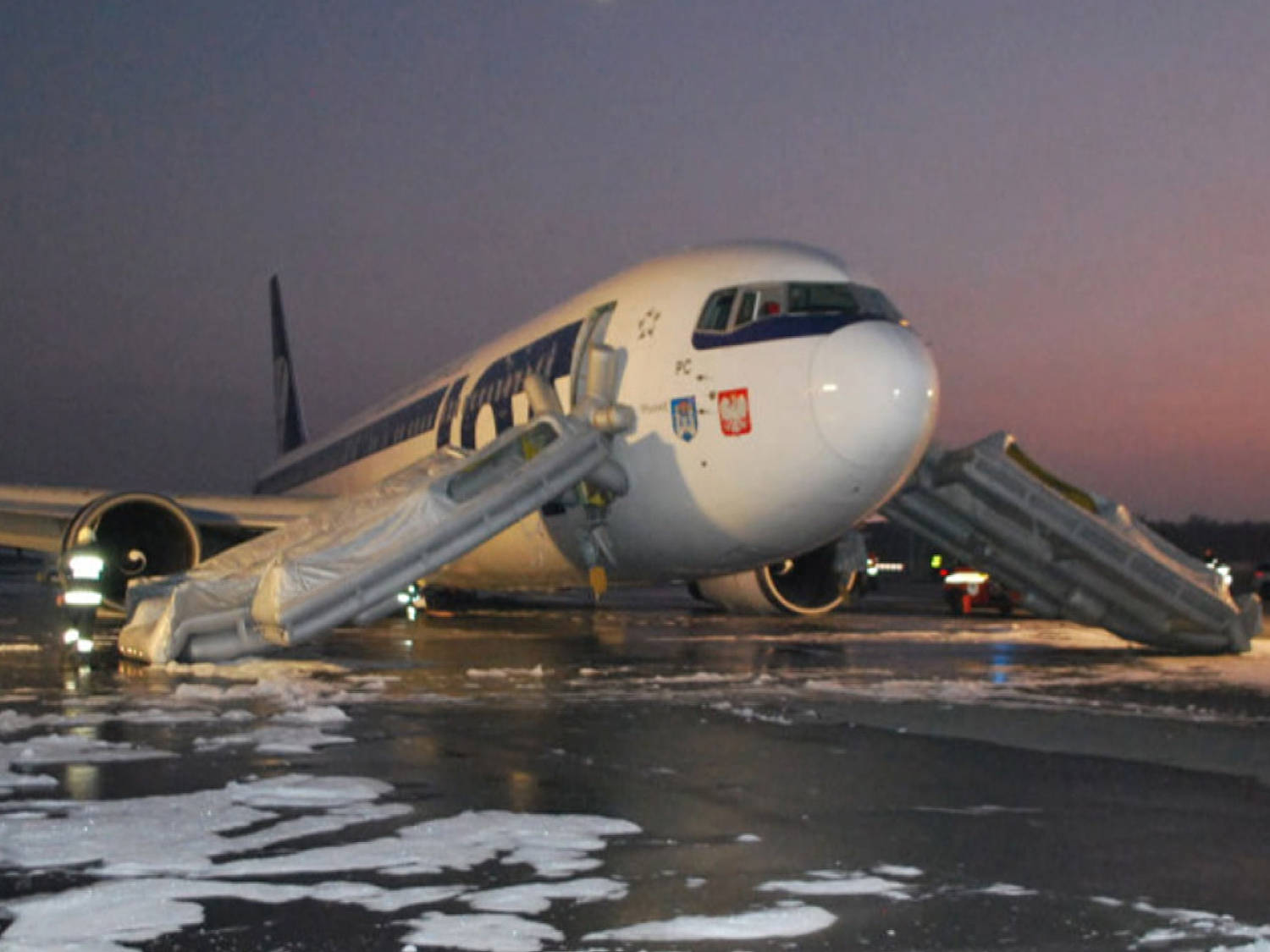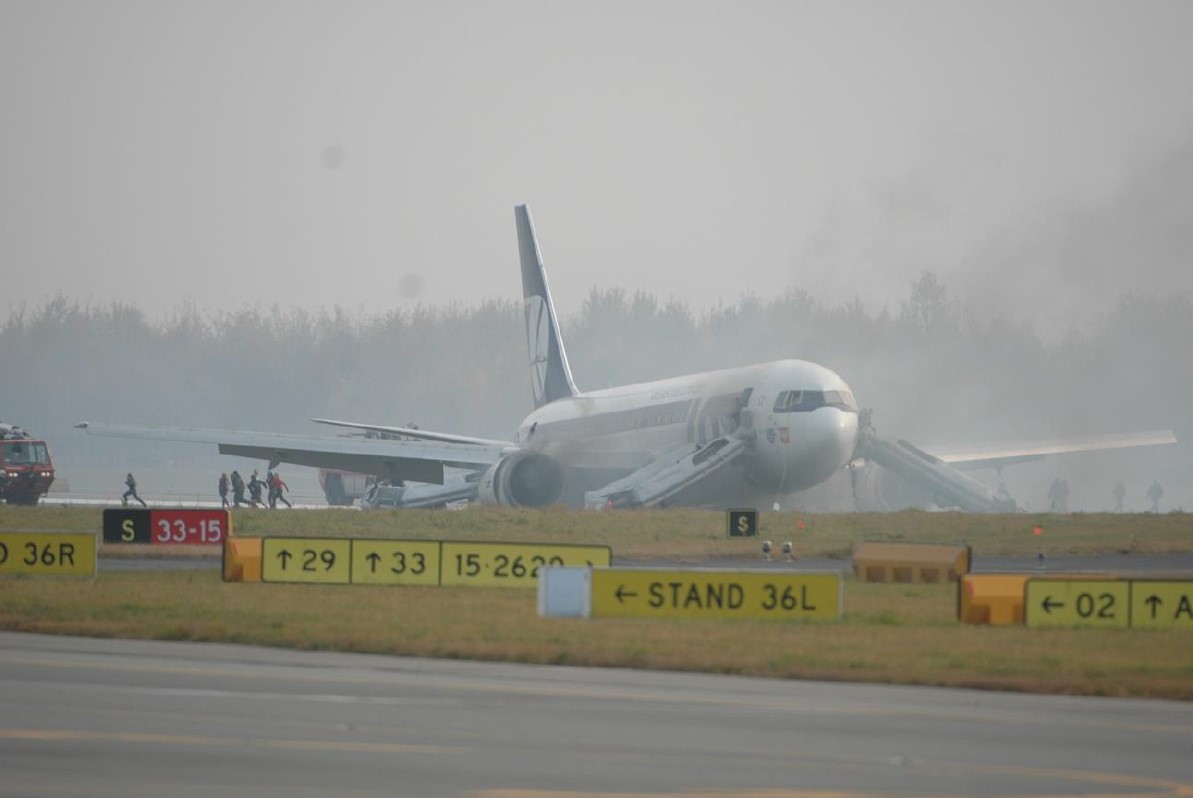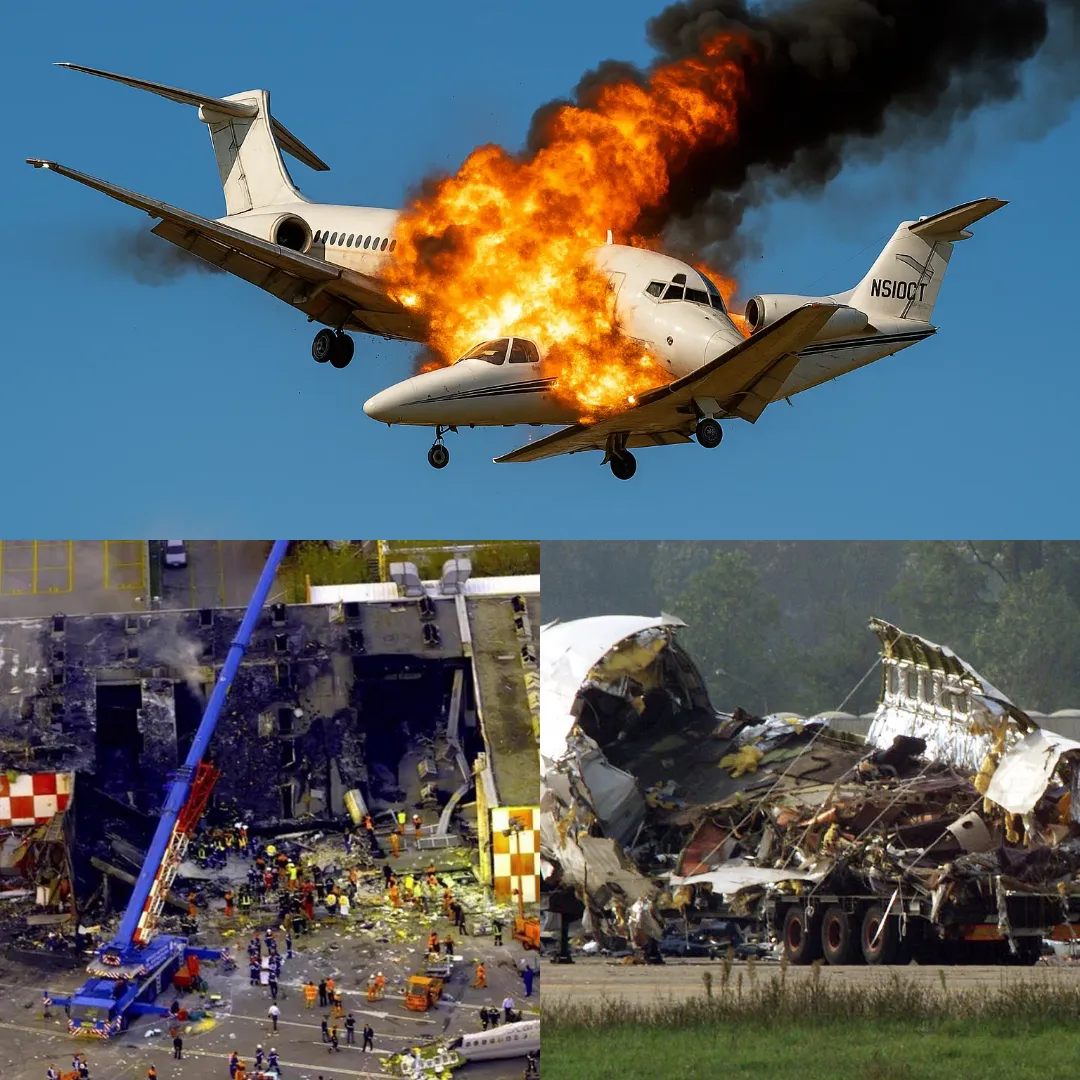
On November 1, 2011, a Boeing 767, flying LOT Polish Airlines Flight 16, was on its way from Newark, New Jersey, to Warsaw, Poland. What should have been a regular long-haul flight turned into a nerve-wracking emergency. T
he aircraft, carrying 221 passengers and 11 crew members, was heading into a nightmare when a seemingly small issue with its hydraulic system escalated into a potentially catastrophic situation.
Despite the severity of the circumstances, the flight crew’s professionalism, quick thinking, and calm under pressure resulted in a successful gear-up landing, saving everyone onboard. This incident, while dramatic, highlights the importance of training, teamwork, and the critical role of aviation systems.
Hydraulic Problems Trigger a Chain of Events
The journey began on a routine note. The aircraft, a well-maintained Boeing 767, had been inspected and cleared for flight. The captain, a seasoned veteran with more than 16,000 hours of flight experience, and the first officer, a highly skilled pilot with nearly 10,000 hours, conducted their usual pre-flight procedures.
The weather in Newark was clear, and conditions were perfect for takeoff. However, as the aircraft retracted its landing gear after takeoff, a small, but crucial, failure occurred. The Kevlar hydraulic hose connected to the landing gear on the right side developed a significant leak, gradually draining the central hydraulic system of the aircraft.
The loss of hydraulic pressure triggered an immediate warning in the cockpit. The crew, trained to handle such situations, quickly consulted their quick reference handbook (QRH) and initiated the appropriate checklist for dealing with hydraulic system malfunctions.
The Boeing 767 has three hydraulic systems: left, right, and center. These systems are generally redundant, meaning that if one fails, the others can pick up the slack. However, some systems, such as the gear extension and flap retraction systems, are not hydraulically redundant but are electrically controlled.
With the hydraulic pressure dropping and the central system failing, the crew understood that they would need to use alternate procedures for landing gear extension. However, this was a minor inconvenience at that point, as there was no immediate threat.
The aircraft continued its flight over the Atlantic, and the crew decided to carry on towards their destination in Warsaw. They had enough fuel to continue flying and had time to work through the situation calmly.

The Emergence of a New Problem
Despite the relatively manageable nature of the initial issue, the real challenge arose when the crew attempted to extend the landing gear using the alternate procedure.
After following the necessary steps, including pressing the gear extension button to release the landing gear locks, the crew was confronted with a troubling result: the gear simply would not extend.
The crew tried the procedure several times, but each attempt yielded the same result: no gear extension. At this point, the pilots were facing an entirely new problem—one they had not anticipated.
The hydraulic systems were failing, but they had a backup plan in place for that. The real issue now was the failure of the alternate gear extension procedure, which had no clear resolution in the aircraft’s checklist.
Despite the lack of clarity, the crew remained calm. They initiated a holding pattern and contacted their operations center, reporting the issue. The crew was well aware of the possibility of a gear-up landing, but they had no idea how extensive the damage to the aircraft might be or if there was even more significant damage beyond the right landing gear.

Teamwork Under Pressure
In the face of mounting uncertainty, the crew’s ability to work as a team was crucial. Captain Christopher Benham, with decades of experience in the cockpit, focused on flying the aircraft and keeping it stable, while the first officer, alongside the jump-seat first officer, worked to troubleshoot the issue.
The engineering team on the ground was also brought into the loop, but technical support was delayed due to communication challenges, leaving the crew to handle the situation on their own.
Meanwhile, the captain, aware of the escalating gravity of the situation, declared a mayday to air traffic control. This allowed the emergency services to be put on high alert. The aircraft was still far from Warsaw, and the crew had no choice but to continue flying while figuring out their next steps. Their goal was to get the aircraft to Warsaw and attempt to land with the gear extended using the alternate procedure. Time was of the essence, and every moment counted.
A Desperate Search for Solutions
The crew had made a critical decision to continue their flight rather than turn back. They were given additional time in the air to troubleshoot, but the situation was becoming dire. The aircraft was now in a holding pattern, burning fuel and descending as the pilots worked through the checklist once more.
After discussing all possible options, the crew was guided by the engineer to check the circuit breaker panel, which controls the alternate gear extension.
When the first officer checked the circuit breaker for the alternate gear extension motor, he noticed that the breaker was intact. He was then instructed to manually pop the circuit breaker and reset it, but even this attempt failed to release the landing gear. At this point, the team started to wonder if the problem lay elsewhere. If the alternate gear extension system was not responding, they were left with no option but to attempt a gear-up landing.

The Final Approach and Successful Landing
As the aircraft continued its descent towards Warsaw, the pilots remained focused on controlling the aircraft and keeping it stable for the upcoming landing. They also made sure that the cabin crew was briefed on the emergency landing procedures.
The lead purser was told to prepare the passengers for an emergency evacuation upon landing. The cabin crew did an excellent job, maintaining calm and explaining the situation clearly to the passengers, ensuring that everyone was ready for what was to come.
The aircraft eventually reached Warsaw and was vectored for a landing on Runway 33. The crew’s decision to keep the gear extended with the alternate procedure was crucial, and they successfully managed the landing. The landing was a complete success, and the Boeing 767 touched down on the runway with a gear-up landing. Although sparks flew from the engines during the landing roll, the aircraft remained intact.
The fire and emergency services responded quickly, extinguishing a small fire in the right engine, but there were no injuries. The passengers and crew exited the aircraft safely, and the aircraft was later assessed for damage. It was determined that the aircraft was not economically viable to repair, but the outcome of this emergency was a tremendous success considering the circumstances.

Investigation and Lessons Learned
The investigation into the incident revealed that the failure was caused by a hydraulic hose that had developed a leak. The failure of the alternate gear extension procedure was linked to a popped circuit breaker that the first officer failed to notice, which ultimately caused the gear to remain retracted.
The investigation led to several recommendations for Boeing, including updates to the aircraft’s non-normal checklist and improvements to the circuit breaker panel to prevent accidental disconnects in the future.
This incident also highlighted the importance of crew resource management (CRM). The teamwork and communication between the pilots and cabin crew were exemplary, and the incident served as a textbook example of how effective CRM can be during an emergency. Additionally, the importance of thorough pre-flight checks and adherence to maintenance procedures was reinforced. Although the situation was complex and dangerous, the crew’s professionalism ensured that no lives were lost.
Conclusion
The miraculous outcome of LOT Polish Airlines Flight 16 is a testament to the dedication and professionalism of the flight crew. Despite the challenges they faced, the pilots’ quick thinking, strong teamwork, and reliance on their training ensured that they brought the aircraft down safely. W
hile the incident revealed weaknesses in the aircraft’s systems and maintenance procedures, it also showcased the resilience and adaptability of the crew. This remarkable story serves as a reminder of the critical importance of aviation safety protocols and the human element in ensuring the safety of passengers and crew alike.



-1751176979-q80.webp)